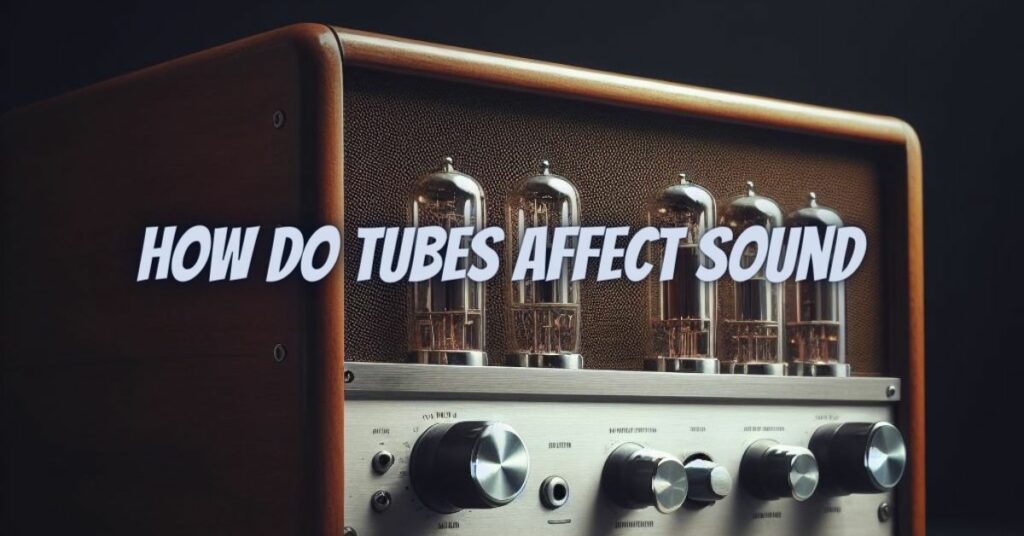Tubes, also known as valves, are electronic devices that amplify electronic signals. They were once the only way to amplify sound, but have since been replaced by transistors in most applications. However, tubes are still used in some high-end audio equipment, such as guitar amplifiers and high-fidelity stereo systems.
One of the reasons why tubes are still popular in audio equipment is because of the way they affect the sound. Tubes produce a type of distortion called even-order harmonic distortion. This type of distortion is generally considered to be more pleasing to the ear than odd-order harmonic distortion, which is produced by transistors.
Even-order harmonic distortion adds richness and warmth to the sound. It also helps to make the sound more complex and interesting. This is why tubes are often used in guitar amplifiers to produce the classic “tube” sound.
In addition to even-order harmonic distortion, tubes also have a number of other characteristics that affect the sound. For example, tubes have a relatively slow response time compared to transistors. This means that they do not respond to changes in the input signal as quickly. This can give the sound a more compressed and saturated feel.
Tubes also have a limited dynamic range compared to transistors. This means that they cannot amplify a very wide range of signal levels without clipping. This can also contribute to the compressed and saturated sound of tube amplifiers.
Overall, tubes have a number of characteristics that affect the sound in a positive way. They produce even-order harmonic distortion, which adds richness and warmth to the sound. They also have a slow response time and limited dynamic range, which can give the sound a more compressed and saturated feel.
Here are some specific examples of how tubes affect the sound in different types of audio equipment:
- Guitar amplifiers: Tubes are often used in guitar amplifiers to produce the classic “tube” sound. This sound is characterized by its richness, warmth, and sustain. Tubes also help to create a more complex and interesting sound by adding even-order harmonic distortion.
- High-fidelity stereo systems: Tubes are also used in some high-fidelity stereo systems. In this context, they are used to amplify the audio signal before it is sent to the speakers. Tubes can help to improve the sound quality of a stereo system by adding richness, warmth, and detail to the sound.
- Microphones: Tubes are also used in some microphones. Tube microphones are known for their warm and rich sound. They are often used to record vocals and acoustic instruments.
It is important to note that not all tubes are created equal. Different types of tubes have different characteristics, which can affect the sound in different ways. For example, some tubes are known for their warm and rich sound, while others are known for their bright and clear sound.
If you are considering using tubes in your audio equipment, it is important to do your research and choose the right type of tubes for your needs. There are many resources available online and in libraries that can help you to learn more about tubes and their impact on sound.


